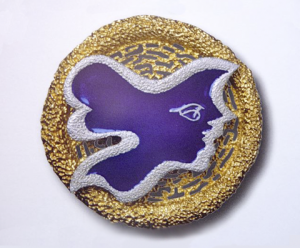
When most people think of Modern art, they picture Picasso’s jangled portraits, Alexander Calder’s giant mobiles, or Salvador Dalí’s surrealist dreamscapes. But all of these artists designed jewelry as well. So did several others who were well-known artists in the ’50s and ’60s.
Much of it was innovative, some quite beautiful. Yet, of the millions who line up in museums every year to admire 20th-century artists, few ever see their wearable art.
If you can make it to Barcelona in the next three months, you’ll have a rare opportunity to see much of it in one place when Jewelry by Artists: From Modernism to the Avant-Garde opens tomorrow in Barcelona at the Museu Nacional d’Art de Catalunya. Among the jewels on view will be works by Auguste Rodin, Hector Guimard, Josef Hoffmann, Max Ernst, Salvador Dalí, Georges Braque, Alexander Calder, Fernand Léger, Hans Arp, Man Ray, and Pablo Picasso.
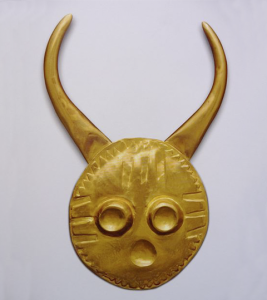
In the 1960s, the boundaries between fine art and craft were blurring, and artists of all kinds were experimenting with various media. Both Picasso and Ernst designed limited production jewelry lines in collaboration with French goldsmith François Hugo. Using iconic images from their paintings, Hugo produced limited sets of numbered and signed pieces, and packed them in fitted wooden boxes with the images lithographed on the lid.
Decades later, it was discovered that Picasso had experimented with jewelry well before that, in a more private and impulsive way. The work he produced with Hugo was a commercial effort, capitalizing on a trend.
One of the first to find and market those boxed pieces in the U.S. was Joan Sonnabend, who ran a Manhattan gallery of artist-made jewelry from 1972 to 1975. Sculpture to Wear was tucked into the famous Plaza hotel, which Sonnabend’s husband owned at the time.
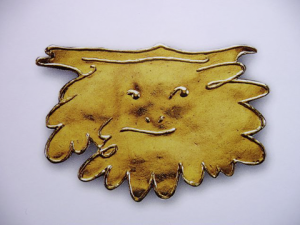
The gallery helped foster a new appreciation and demand for jewelry made by artists of the day, both established and unknown. Some, like the young and then-unknown Robert Lee Morris, went on to become famous for jewelry rather than fine art.
When Sculpture to Wear opened, the artists she featured were alive and productive, including Picasso, Calder, Ernst, and Man Ray. Though legendary even then, they did not produce the overwhelming demand (and astronomical prices) that every napkin scribble by Picasso inspires today.
Sonnabend, who also sold modern paintings and sculpture, soon found that art jewelry, even jewelry made by famous artists like Picasso, was a hard sell. “It was a tough battle for years,” she told me. “There was no market for it. I had to create a market.”
Given the limited amount of name-artist jewelry, she had to search aggressively. “Picasso made jewelry mostly for friends; it’s not like he was pumping it out,” she explains. “Max Ernst produced somewhat more, but only in editions of six. These were not jewelry designers, after all. They were painters who also made jewelry—with the exception of a few young people like Morris, who was very inventive in those days.”
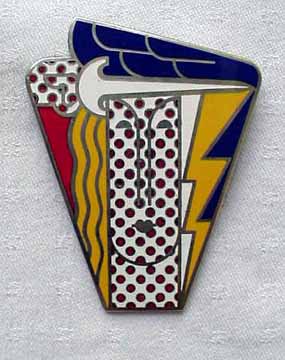
What she couldn’t find, she solicited. “I was already selling painting, sculpture, and drawings. So, as I was traveling around seeing art, I’d say to the artist, ‘Why don’t you make a piece of jewelry for me?’ I figured, why shouldn’t we have art we can wear? It wasn’t about diamonds, you understand, it was about aesthetics.”
While artists who handed over their designs to professional goldsmiths were producing jewelry in traditional precious metals, others whose work Sonnabend carried were experimenting in rubber and plastic. Even pop artist Roy Lichtenstein designed a series of pin/pendants that he had professionally enameled.
Alexander Calder is one of the few artists featured in the Barcelona exhibit who actually made his jewelry, mostly in brass and silver—materials similar to those used in his sculpture. “Like many artists, especially sculptors, jewelry served as a model, almost, for larger pieces,” says Toni Greenbaum, a specialist in Modernist jewelry. “That was certainly true of Calder.”
Gloria Leiberman, director of Skinner’s jewelry department, has sold jewelry by Picasso and Ernst, as well the French painter André Derian, “They were all very similar: plaques and faces,” she says. “They were all trying their hands, but they were not jewelers. They were painters and sculptors. I think that their jewelry is very interesting to the collector of works by those artists but not as beautiful pieces of jewelry.”
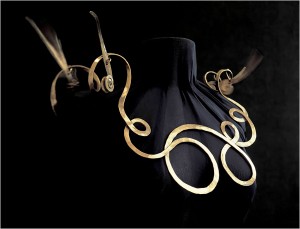
Greenbaum points out, however, that the goldsmith-made work still bears the mark of the artists who designed it. Picasso, Salvador Dalí and Georges Braque “really worked on their jewelry,” she says. “They worked symbiotically with the artisans who made it. So the hand of the artisan was an extension of the artist. It was only done that way because you need skills to work specific materials. Picasso, Braque and Dalí were not skilled metalsmiths, whereas Calder was.”
But the wearable experiments of the 20th century’s most famous artists brought new respect to jewelry as an art form. “They lent it relevance,” says Leiberman. “This was a body of work by well-established artists, not jewelers.” Some would also say they paved the way for celebrity jewelry designers, Picasso’s granddaughter Paloma being one. “Paloma is still mainstream jewelry,” Leiberman says. “If her name wasn’t Picasso and she wasn’t working for Tiffany, I don’t know. It makes people think, ‘Oh, we have artist-designed jewelry.’ ”
One thing is certain: the concept found a receptive audience. “The artist-designed jewelry trend uncovered a niche in the market,” says Leiberman. To some degree, that niche turned into a demand for both big-name designers and unique, self-expressive jewelry—and it’s been growing ever since.
Related posts:
Alexander Calder’s jewelry: going mobile
Salvador Dalí: bejeweled surrealism
Man Ray’s jewelry by Gem Montibello
Georges Braque: jewels in flight
Related products:

